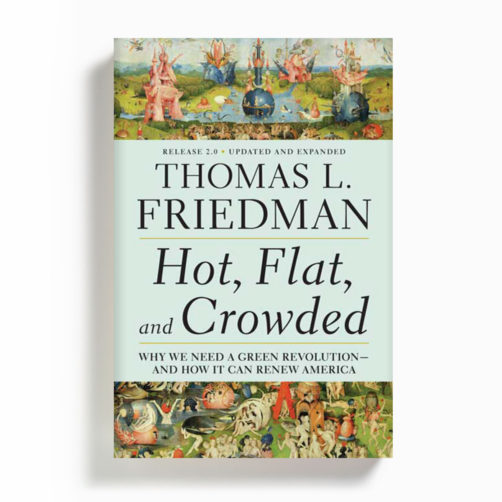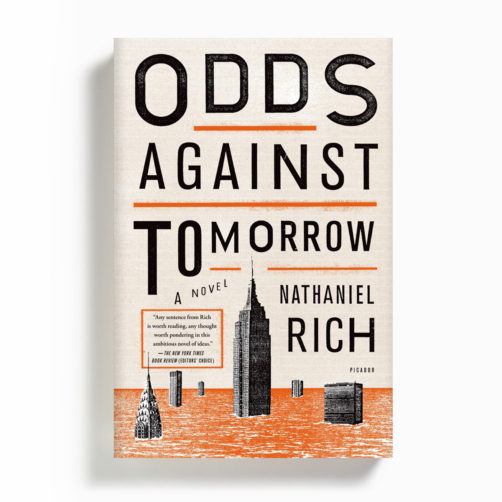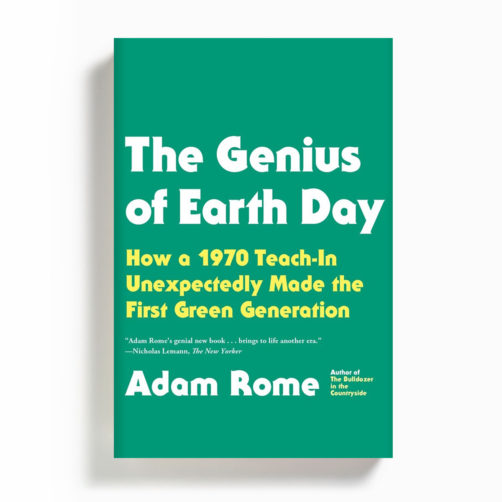“We need the tonic of wildness . . . At the same time that we are earnest to explore and learn all things, we require that all things be mysterious and unexplorable, that land and sea be indefinitely wild, unsurveyed and unfathomed by us because unfathomable. We can never have enough of nature.”
―Henry David Thoreau, Walden
With the Trump administration’s recent overhaul of federal pollution restrictions on coal-burning power plants, climate change deniers within our government, and Trump’s decision to withdraw from the Paris Agreement, it is more important than ever that we arm ourselves with knowledge and information about the world around us. This administration’s actions have not gone unnoticed, sparking protest and people taking to the streets to remind us that “There is no Planet B.” With that in mind, we have put together a reading list that calls attention to environmental issues from fracking to overcrowding, while also taking Thoreau’s words to heart and highlighting books that celebrate the way nature enriches our lives.

Amity and Prosperity by Eliza Griswold
In Amity and Prosperity, prize-winning poet and journalist Eliza Griswold draws on seven years of reporting to tell the story of the energy industry’s impact on a small town at the edge of Appalachia, and one woman’s transformation from a struggling single parent to an unlikely activist. Stacey Haney is a local nurse working hard to raise two kids and keep up her small farm when the fracking boom comes to her hometown of Amity, Pennsylvania. Intrigued by reports of lucrative natural gas leases in her neighbors’ mailboxes, she strikes a deal with a Texas-based energy company. When mysterious sicknesses begin to afflict her children, she appeals to the company for help but is assured that nothing is wrong. Alarmed by her children’s illnesses, Haney joins with neighbors and a committed husband-and-wife legal team to investigate what’s really in the water and air.

Hot, Flat, and Crowded by Thomas L. Friedman
Global warming, rapidly growing populations, and the expansion of the world’s middle class through globalization have produced an extremely unstable planet.
Global warming, rapidly growing populations, and the expansion of the world’s middle class through globalization have produced an extremely unstable planet—one that is hot, flat, and crowded. Pulitzer Prize-winning author Thomas L. Friedman writes about America’s urgent need for national renewal and explains how a green revolution can bring about both a sustainable environment and a sustainable America. In the re-release of the book, Friedman furthers his look at the links between our treatment of the natural world and the state of our financial markets, and “pleads for Americans to wake up to the perils and opportunities of an emerging resource-strapped world” (Newsweek).

Other Minds by Peter Godfrey-Smith
Financial Times wrote: “Godfrey-Smith takes us on a philosophical journey of a quite unique kind, for its backdrop is the sea.” Although mammals and birds are widely regarded as the smartest creatures on Earth, a distant branch of the tree of life has also sprouted higher intelligence: the cephalopods. Octopuses have been known to identify human keepers, turn off lightbulbs, and plug drains. In this book Godfrey-Smith, a distinguished philosopher of science and skilled scuba diver, tells the story of how subjective experience crept into being, and how nature became aware of itself.

Borne by Jeff VanderMeer
Rachel is a young woman surviving as a scavenger in a city destroyed by drought and ravaged by the experiments of the Company, a biotech firm. She ekes out an existence in the shelter of a run-down sanctuary. One day Rachel finds Borne during a scavenging mission, who is little more than a green lump but exudes a strange charisma. Borne reminds Rachel of the marine life from the island nation of her birth, now lost to rising seas, and against her best instincts decides to keep Borne. With time Borne learns to speak, and starts learning about the world—helping Rachel find beauty in the desolation around her. Dubbed “the weird Thoreau” by The New Yorker, Jeff VanderMeer said in an interview with The Atlantic, “We can’t live the way we live now, but there are ways in which we can live in a useful and interesting and comforting and satisfying way within what’s happening.”
“We can’t live the way we live now, but there are ways in which we can live in a useful and interesting and comforting and satisfying way within what’s happening.”
The Genius of Earth Day by Adam Rome
The first Earth Day is the most famous little-known event in modern American history. Earth Day 1970 made the environmental movement a major force in American political life and created an entire green generation, but no one had told the whole story before. In this book, historian Adam Rome describes how in 1970 thousands of Earth Day organizers and participants decided to devote their lives to the environmental cause, working to build a lasting eco-infrastructure and legacy of activism that is still felt today.

Underbug by Lisa Margonelli
Award-winning journalist Lisa Margonelli investigates the environmental and economic impact termites have on human societies, digging deep to examine one of nature’s most misunderstood insects. Over the course of a decade-long obsession with the little bugs, Margonelli pokes around termite mounds and high-tech research facilities. But what begins as a natural history of the termite turns into a profound exploration of the unnatural future we’re building—prompting questions about whether a termite is an individual or a superorganism, and about whether we can harness the termite’s properties to change the world.

Odds Against Tomorrow by Nathaniel Rich
Named an NPR Best Book of the Year and called “the first great climate-change novel” by Rolling Stone, Nathaniel Rich’s tale unfolds in a New York City of the near future. Mitchell Zukor works on the cutting edge of corporate irresponsibility, and business is booming. He spends his days calculating worst-case scenarios for FutureWorld, a consulting firm that indemnifies corporations against potential disasters. When suddenly Mitchell’s darkest predictions come true and an actual worst-case scenario engulfs Manhattan, he realizes he is uniquely prepared to profit, but is left to wonder what it will cost him. In 2019, we’ll also be publishing a significantly expanded version of Rich’s New York Times Magazine story, “Losing Earth: The Decade We Almost Stopped Climate Change,” recounting the story of a small group of American scientists, activists, and politicians who almost saved the world from irreparable climate change damage in the 1980s.
What a Plant Knows by Daniel Chamovitz
Did you know plants can hear and taste things? Renowned biologist Daniel Chamovitz dives deep into how plants experience the world—from the colors they see to the schedules they keep. This inside look reorients the way we understand the role of plants in nature and highlights that we have much more in common with plants than we many realize.

Cradle to Cradle by William McDonough and Michael Braungart
Cradle to Cradle offers a manifesto for a radically different approach to manufacturing and environmentalism. The book argues that the much revered “reduce, reuse, recycle” approach perpetuates an outdated and one-way “cradle to grave” manufacturing model that casts off as much as 90% of the materials it uses as waste. Why not challenge the notion that human industry must inevitably damage the natural world? Using nature as a model, the book lays out a new approach where products are designed so that after their useful life, they provide nourishment for something new. This mindset can be applied to everything from redesigning carpeting to rethinking corporate campuses, and offers exciting and innovative tools for change.
Why not challenge the notion that human industry must inevitably damage the natural world?
The Reef by Iain McCalman
Explorer and historian Iain McCalman takes us on an adventure into the reef to reveal how our shifting perceptions of the natural world have shaped this extraordinary seascape. The Great Barrier Reef stretches 1,400 miles along the Australian coast and is home to thousands of individual reefs and marine species. The Reef traces our profound desire to conquer, understand, embrace, and ultimately save the world’s most complex ocean ecosystem. The New York Times Book Review raved: “By the end of McCalman’s transformative book, we feel the full force of this slow-motion emergency…this passionate history brings to life the Great Barrier Reef’s magnificent mutability.”



